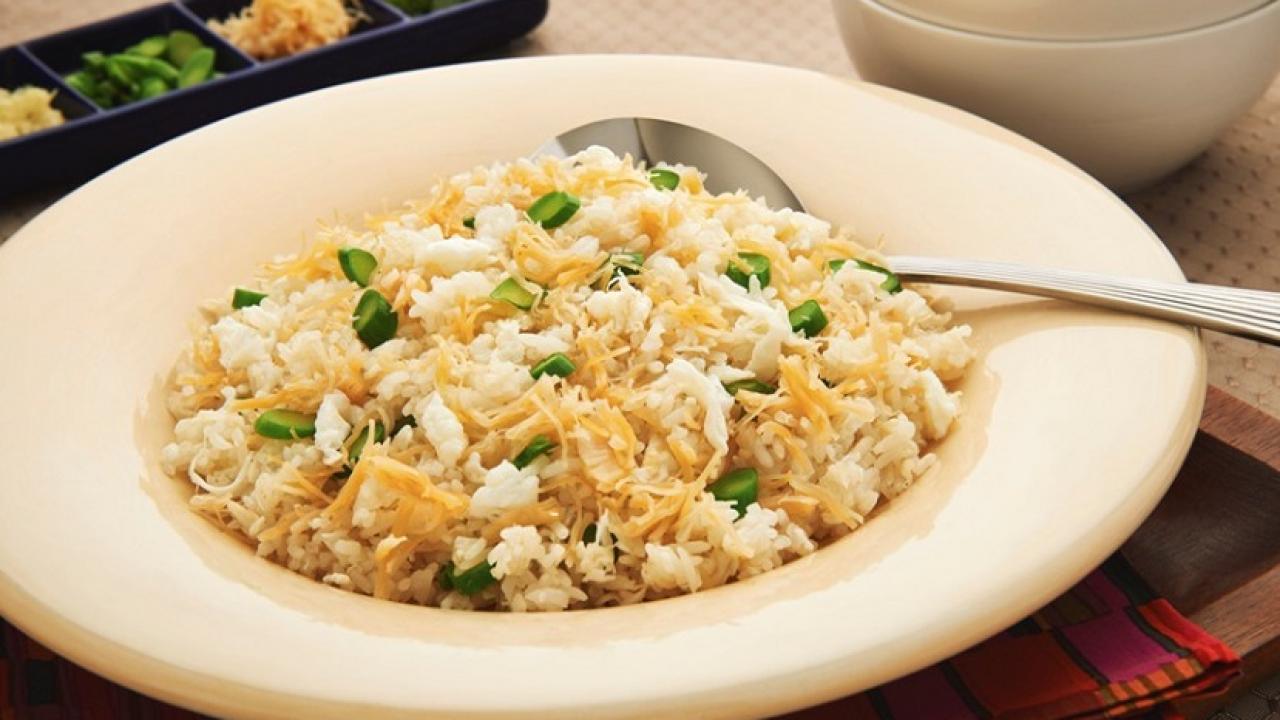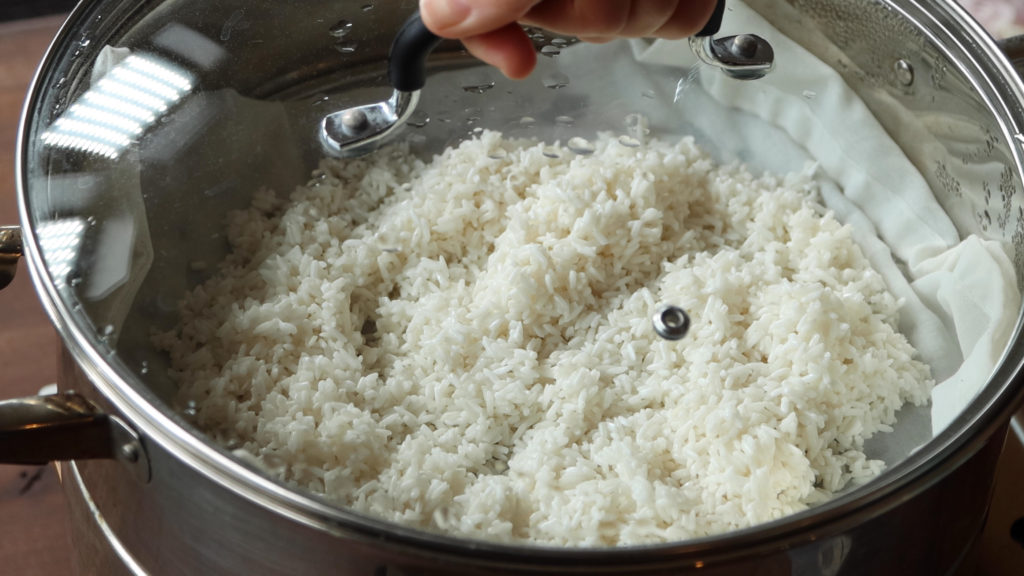The Ultimate Glutinous Rice Recipe: A Culinary Adventure for All
Written By James Morgan
Embark on a flavorful journey with this **glutinous rice recipe** that is sure to captivate your taste buds and become a staple in your kitchen. Glutinous rice, also known as sticky rice, is a cornerstone of traditional Asian cuisine. Renowned for its unique, sticky texture and ability to absorb various flavors, glutinous rice is a versatile ingredient that can be used in a myriad of dishes. In this article, we will explore an in-depth, step-by-step guide to preparing a mouthwatering glutinous rice dish that will leave everyone asking for more.

Understanding Glutinous Rice
Before diving into the **glutinous rice recipe**, it's essential to understand the unique characteristics of this type of rice. Unlike regular rice, glutinous rice is rich in amylopectin but lacks amylose, which gives it its distinctive sticky texture. This rice is commonly used in many traditional Asian dishes, such as sushi, zongzi, and Thai mango sticky rice. Its versatility allows it to be used in both savory and sweet recipes.
Types of Glutinous Rice
There are several types of glutinous rice available, each with its unique properties. The most common varieties include white glutinous rice, black glutinous rice, and purple glutinous rice. White glutinous rice is the most prevalent and is often used in savory dishes. Black and purple glutinous rice, on the other hand, are primarily used in desserts due to their slightly sweet flavor and appealing color. When selecting glutinous rice for your recipe, consider the specific dish you want to prepare and choose the appropriate variety.

Ingredients for the Perfect Glutinous Rice Dish
Ingredients:
- 2 cups of white glutinous rice
- 1 cup of coconut milk
- 2 cups of water
- 1 teaspoon of salt
- 3 tablespoons of sugar
- 1 tablespoon of sesame seeds (optional)
- Cookware: Rice Cooker, Knife, and Cutting Board

Step-by-Step Cooking Instructions
Step 1: Rinse the Rice
The first step in this **glutinous rice recipe** is to thoroughly rinse your rice. Place the rice in a large bowl and pour in cold water. Swirl the rice around with your hand to release any excess starch. Drain the water and repeat this process two to three times until the water runs clear. This step is crucial as it helps to remove the surface starch, which can cause the rice to become overly sticky and gummy.
Step 2: Soak the Rice
After rinsing, let the rice soak in cold water for at least 4 hours, or overnight if possible. Soaking the rice allows it to absorb water evenly, ensuring that it cooks uniformly and retains its characteristic sticky texture. While the rice is soaking, you can prepare the other ingredients for your dish.
Step 3: Cook the Rice
Once the rice has soaked for the appropriate amount of time, drain the water and transfer the rice to your rice cooker. Add 2 cups of water and a pinch of salt to the cooker. Set the cooker to its glutinous rice setting or, if it doesn't have one, simply use the regular rice setting. If you do not own a rice cooker, you can use a heavy-bottomed pot with a tight-fitting lid. Bring the rice to a boil over medium heat, then reduce the heat to low, cover, and simmer for about 15-20 minutes, or until all the water is absorbed.
Step 4: Prepare the Coconut Milk Mixture
While the rice is cooking, it's time to prepare the coconut milk mixture. In a small saucepan, combine the coconut milk, sugar, and remaining salt. Heat the mixture over medium heat, stirring constantly until the sugar is dissolved. Do not allow the mixture to boil. Once the sugar has completely dissolved, remove the saucepan from heat and set it aside.
Step 5: Combine the Rice and Coconut Milk Mixture
After the rice has finished cooking, transfer it to a large mixing bowl. Slowly pour the warm coconut milk mixture over the rice while gently folding the rice to ensure even distribution. Be careful not to overmix, as this can cause the rice to become mushy. Let the rice sit for about 30 minutes, allowing it to absorb the coconut milk mixture fully. This step is crucial in achieving the desired flavor and texture for your dish.
Step 6: Toast the Sesame Seeds
While the rice is absorbing the coconut milk mixture, you can toast the sesame seeds for added flavor and a touch of crunch. In a small, dry skillet, toast the sesame seeds over medium heat, stirring frequently, until they turn golden brown and aromatic. This process usually takes about 3-4 minutes. Be careful not to burn the seeds, as they can quickly go from toasted to burnt.
Step 7: Serve and Enjoy
Once the rice has absorbed the coconut milk mixture and the sesame seeds are toasted, it's time to serve your delectable **glutinous rice recipe**. Spoon the rice onto a serving platter or individual plates. Sprinkle the toasted sesame seeds on top for an extra layer of flavor and texture. This dish can be enjoyed as a standalone treat or as a delightful accompaniment to various savory dishes. For instance, you might want to serve it alongside your next barbecue feast, adding an unexpected but delightful twist to traditional barbecue fare.

Additional Glutinous Rice Recipe Ideas
Now that you've mastered the basics of this **glutinous rice recipe**, there are countless variations and additions you can explore. Here are a few ideas to get you started:
- Mango Sticky Rice: Add fresh mango slices to the rice and drizzle with honey for a delicious dessert.
- Sweet Red Bean Rice: Incorporate sweet red beans into your glutinous rice for a traditional Asian dessert.
- Savory Sticky Rice with Sausage: Stir-fry glutinous rice with Chinese sausage, vegetables, and soy sauce for a savory dish.
- Pineapple Sticky Rice: Cook the rice with pineapple chunks and coconut milk for a tropical twist.
For those looking to explore even more culinary adventures, you might be interested in trying out some other fantastic recipes. Check out this Corned Beef recipe or this Crusty Bread recipe, both of which are delightful complements to any meal.
Frequently Asked Questions
Can I use a different type of milk instead of coconut milk?
Yes, you can substitute coconut milk with other types of milk, such as almond milk or cow's milk. Keep in mind that the flavor and texture of the dish may vary slightly depending on the type of milk used. Coconut milk is recommended for its rich, creamy texture and unique flavor, which complement the glutinous rice perfectly.
Can I prepare glutinous rice without a rice cooker?
Absolutely! While a rice cooker makes the process more convenient, you can still achieve excellent results using a heavy-bottomed pot with a tight-fitting lid. Simply follow the same instructions for rinsing, soaking, and cooking the rice, ensuring to monitor the heat and water levels closely to prevent burning or sticking.
How do I store leftover glutinous rice?
Store any leftover glutinous rice in an airtight container in the refrigerator for up to 3 days. To reheat, sprinkle a small amount of water over the rice and microwave in short intervals, stirring in between, until heated through. You can also reheat the rice in a steamer for a more traditional approach.
Can I freeze cooked glutinous rice?
Yes, you can freeze cooked glutinous rice for up to 1 month. To freeze, portion the rice into individual servings and place each portion in a freezer-safe, airtight container or resealable plastic bag. Thaw the frozen rice in the refrigerator overnight before reheating.
Experimenting with Flavors and Ingredients
One of the most exciting aspects of cooking is experimenting with different flavors and ingredients to create unique dishes. With this versatile **glutinous rice recipe**, you have the freedom to incorporate various ingredients and seasonings to suit your preferences. For example, you might want to try adding sliced onions and garlic to the rice while it cooks for a savory twist, or mix in dried fruits and nuts for added texture and sweetness. The possibilities are endless, and the only limit is your imagination.
For a more detailed guide on enhancing your culinary skills and discovering new recipes, check out this [LINK](https://cooking.nytimes.com/recipes/12177-fried-rice) for additional inspiration.
Final Thoughts
In conclusion, this comprehensive guide to crafting the perfect **glutinous rice recipe** provides all the necessary steps, tips, and variations to help you create a delicious, crowd-pleasing dish. Whether you're an experienced cook or a novice in the kitchen, you'll find that preparing glutinous rice is both rewarding and enjoyable. So go ahead, gather your ingredients, and embark on a culinary adventure that will surely delight your taste buds and impress your family and friends.
For those of you who regularly use kitchenware, ensuring they are properly maintained is essential for long-lasting use. Here are some recommended products: Cookware Cleaner and Cutting Board Oil.
As an Amazon Associate, I earn from qualifying purchases.



